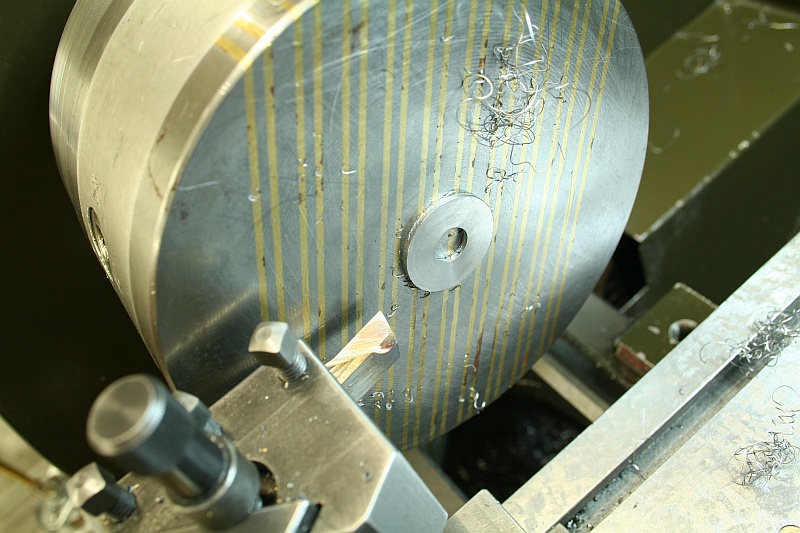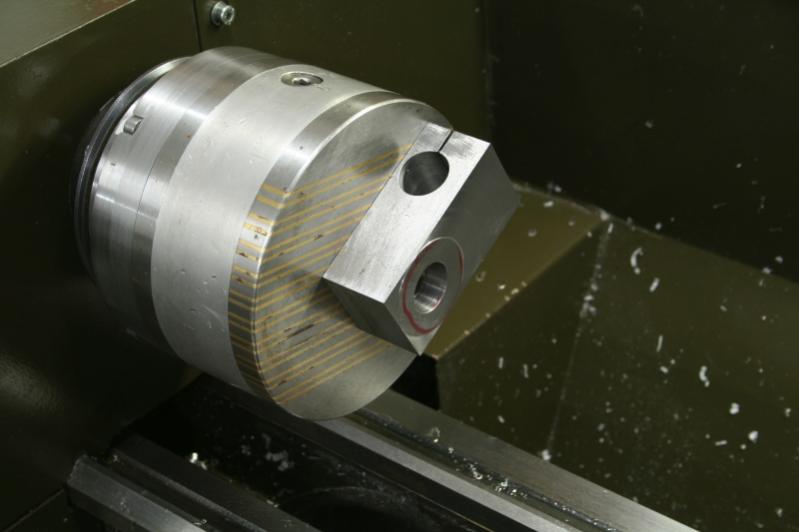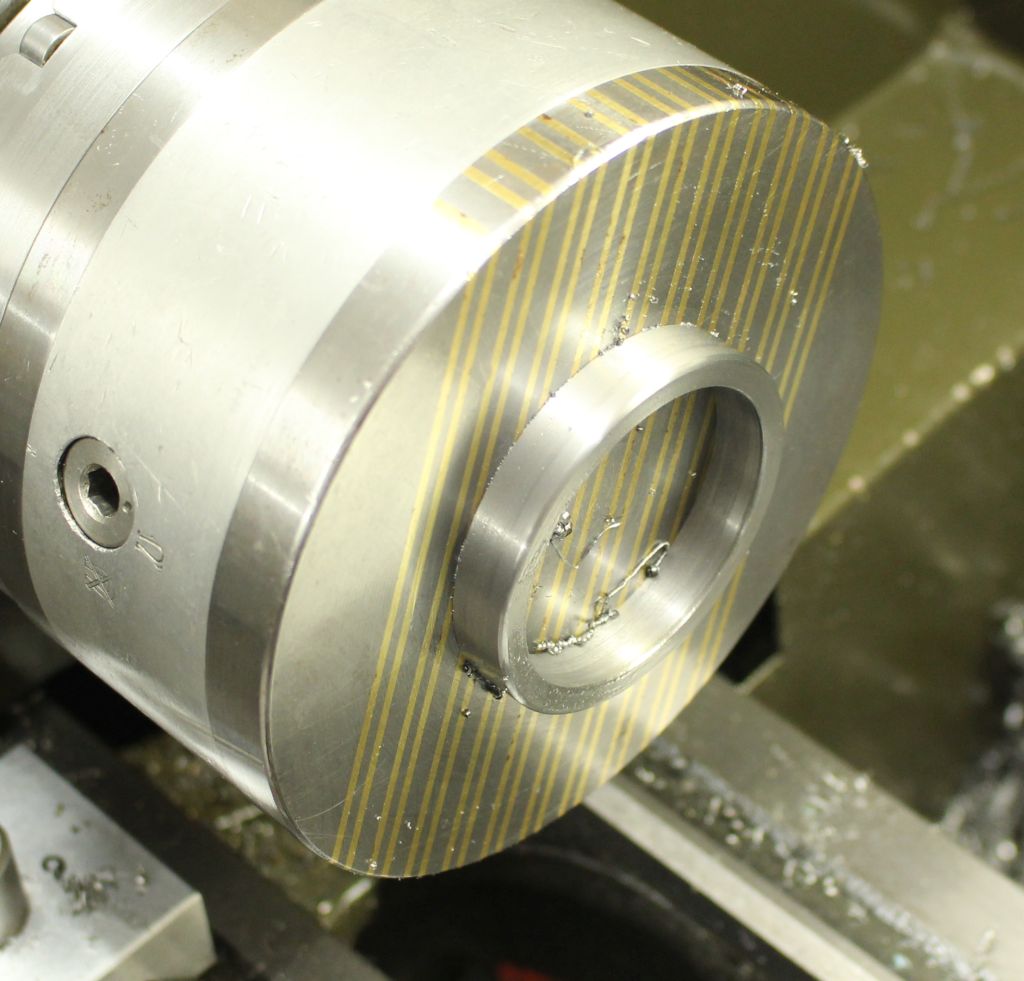
Its biggest advantage is the fact that it produced dead parallel surfaces on workpieces without much effort. That’s a handy feature if you need to machine a lot of disk shaped workpieces like washers, distance bushings or spacers. Every time you stick a machined surface up against the magnet and machine the opposing surface you will end up with a workpiece that has two parallel surfaces.
The second big advantage comes into play when you need to center a workpiece on the chuck – The part on the magnet can be knocked around with a copper hammer while being checked with an indicator.
Centering parts to a runout of 1/100mm or better (depends on how accurate you can measure..and how good the spindle bearings on your lathe are) takes only a few seconds.
The holding strength of such a chuck depends on the surface finish, surface area (and thickness) of the part:
Magnetic chucks come in different flavors, normal- and fine pole. The fine pole magnets have generally a bit lower holding strength but they hold thin stock better than a normal pole magnet
My chuck is between normal and fine pole and can still hold an M8 fender washer well enough to take a careful 0,1mm facing cut with a sharp (sharp!) HSS tool:

The thickness tolerance of such a washer, machined on the magnet is quite good:

You can also stick a small grinding vice onto the magnet to hold irregular shaped parts:



Or have irregular shaped parts direct sitting on the magnet:

But its main use is to produce parallel discs, rings and bushings like those:


It is also very useful for grinding operations, as its dust proof and does not need as much cleaning as a three jaw chuck or a collet chuck would need after a grinding job.
I usually take a V-block, stick it to the magnet and clamp the part in it – Then everything gets centered and is good to go:



Or, if the surface area of the part is big enough, you can have the part sit directly on the magnet:


You can do some tricks to increase the holding strength, if a workpiece is to small, like blocking it in. That means putting pieces of material next to the part to restrict its movement on the magnet. Pieces of steel, old gage blocks, parallels, pieces of shim stock and feeler gage leaves work very well for that purpose.
In my mind the magnetic chuck is not essential for survival in the machine shop, but it makes live a lot easier from time to time :-)
Of course it takes some experience to judge if you can do a certain operations with it or run danger of throwing a part trough the shop...